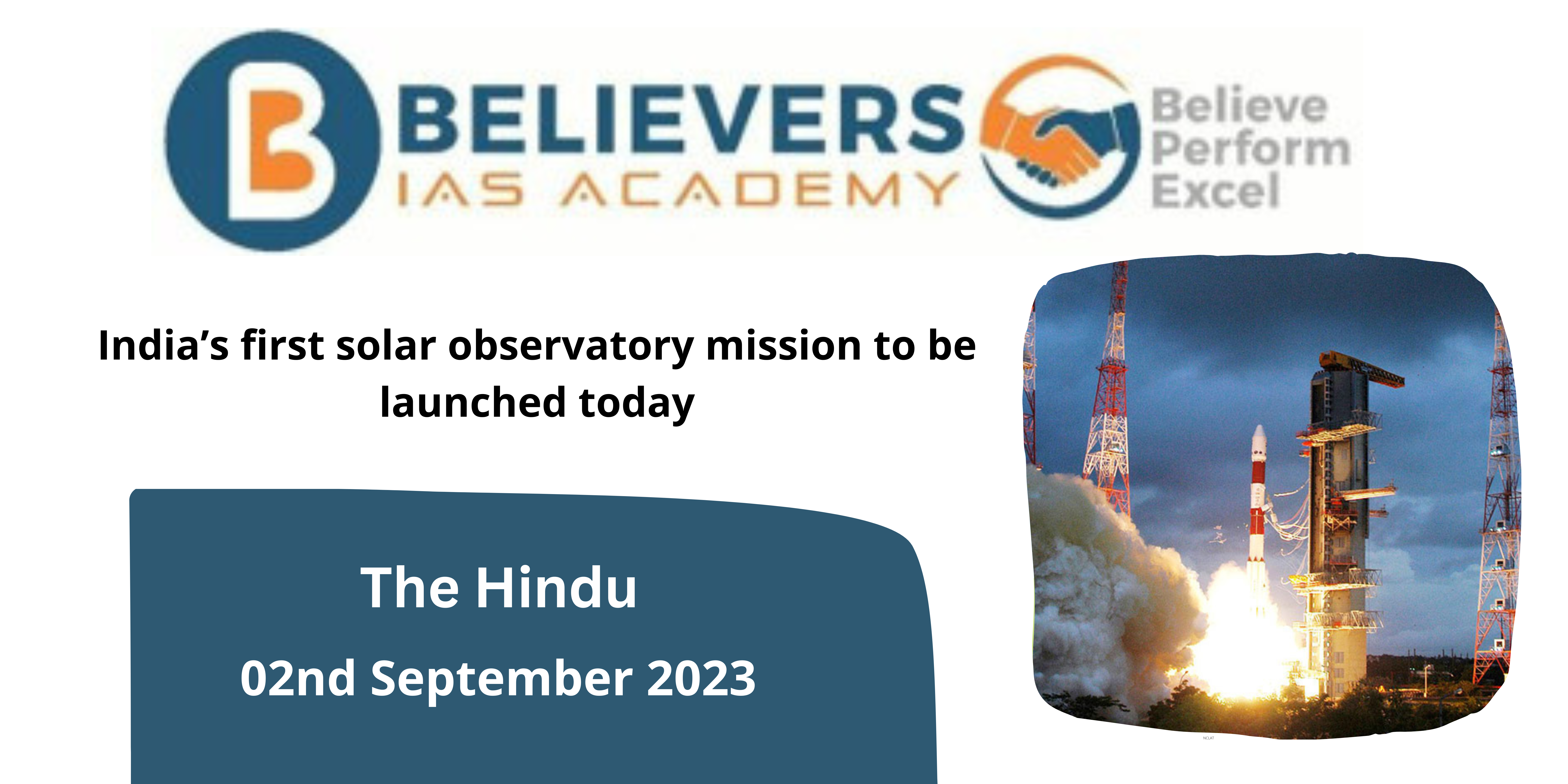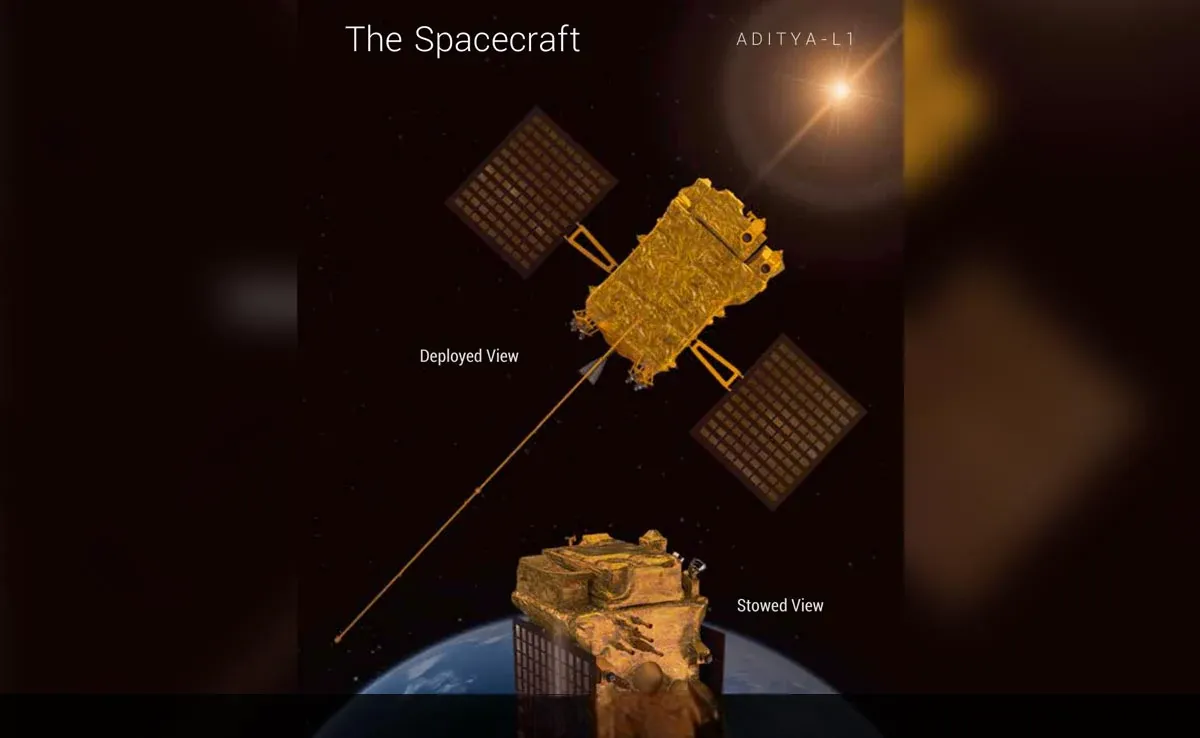India’s first solar observatory mission to be launched today
Context
On Saturday at 11.50 a.m., the Polar Satellite Launch Vehicle (PSLV) will lift off from the Satish Dhawan Space Center in Sriharikota carrying India’s first solar observatory mission, known as Aditya-L1.
What is Aditya-L1?
- The first Indian mission to study the Sun in space will be called Aditya L1. The spacecraft will be launched into a halo orbit around the Lagrange point 1 (L1) of the Sun-Earth system, which is situated approximately 1.5 million kilometres from Earth. The main benefit of having a satellite in the halo orbit around the L1 point is that it can observe the Sun continually without being obscured by Occultations or eclipses.
What are the payloads that Aditya L1 is carrying on board?
- Visible Emission Line Coronagraph(VELC):
-
-
- The Visible Emission Line Coronagraph (VELC) was created at the Bangalore-based Indian Institute of Astrophysics.
- investigates the solar corona and the CME (Coronal Mass Ejection) dynamics.
-
- Solar Ultraviolet Imaging Telescope (SUIT):
-
-
- The Inter-University Centre for Astronomy & Astrophysics in Pune developed the Solar Ultraviolet Imaging Telescope (SUIT).
- Ultraviolet (UV) images of the solar photosphere and chromosphere.
- determines variations in near UV solar irradiation.
-
- Aditya Solar Wind Particle Experiment (ASPEX):
-
-
- The Physical Research Laboratory in Ahmedabad developed the Aditya Solar Wind Particle Experiment (ASPEX).
- investigates the distribution of energy in the solar wind and energetic ions.
-
- Plasma Analyser Package for Aditya(PAPA):
-
-
- At the Vikram Sarabhai Space Centre in Thiruvananthapuram, the Space Physics Laboratory developed the Plasma Analyser Package for Aditya (PAPA).
- investigates the energy distribution of the solar wind and energetic ions.
-
- Solar Low Energy X-ray Spectrometer (SoLEXS):
-
-
- The U. R. Rao Satellite Center in Bangalore developed the Solar Low Energy X-ray Spectrometer (SoLEXS).
- studies solar X-ray outbursts across a broad X-ray energy spectrum.
-
- High Energy L1 Orbiting X-ray Spectrometer (HEL1OS):
-
-
- The Bangalore-based U R Rao Satellite Centre developed the High Energy L1 Orbiting X-ray Spectrometer (HEL1OS).
- studies solar X-ray outbursts across a broad X-ray energy spectrum.
-
- Magnetometer Payload:
-
- The Laboratory for Electro-Optics Systems in Bangalore developed the Magnetometer Payload.
- possible to detect magnetic fields from other planets near the L1 point.
What are the objectives of the mission?
The project seeks to deliver essential data to comprehend several important areas of solar physics and space weather, such as:
- Coronal heating: the investigation of the processes that heat the Sun’s corona.
- Coronal Mass Ejections (CMEs): Investigating the properties and dynamics of these solar occurrences is called coronal mass ejections (CMEs).
- Pre-flare and flare activities: Understanding precursor events and flare features on the Sun.
- Dynamics of space weather: Understanding how space weather events behave.
- Studying the motion of particles and magnetic fields in space can help us understand how fields and particles spread through the interplanetary medium.
Conclusion:
Aditya-L1’s scientific goal is to improve our knowledge of the Sun and how it affects space weather, which has enormous ramifications for Earth’s ecology and space-based technologies. This project adds to India’s expanding capabilities in solar and space science.





